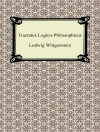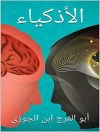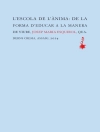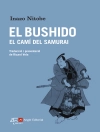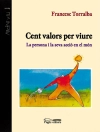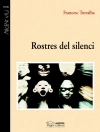This comprehensive volume surveys an important but neglected period of Chinese intellectual history: Xuanxue (Neo-Daoism). It provides a holistic approach to the philosophical and religious traits of this movement via the concepts of non-being, being, and oneness. Thinkers and texts on the periphery of Xuanxue are also examined to show readers that Xuanxue did not arise in a vacuum but is the result of a long and continuous evolution of ideas from pre-Qin Daoism.
The 25 chapters of this work survey the major philosophical figures and arguments of Xuanxue, a movement from the Wei-Jin dynastic period (220-420 CE) of early-medieval China. It also examines texts and figures from the late-Han dynasty whose influence on Xuanxue has yet to be made explicitly clear. In order to fully capture the multifaceted nature of this movement, the contributors brilliantly highlight its more socially-oriented characteristics.
Overall, this volumepresents an unrivaled picture of this exciting period. It details a portrait of intellectual and cultural vitality that rivals, if not surpasses, what was achieved during the Warring States period. Readers of the Yijing, Daodejing, and Zhuangzi will feel right at home with the themes and arguments presented herein, while students and those coming to Xuanxue for the first time will acquire a wealth of knowledge.
Daftar Isi
Part 1: Basic Matters.- Chapter 1. On the Difference between Classical and Neo-Daoism.- Chapter 2. Wang Bi, Guo Xiang and Philosophical Exegesis: A New Approach to Reading Classical Texts (Richard J. Lynn).- Chapter 3. The Neo-Daoist Lifestyle: Self-Cultivation and Qi Practices (Livia Kohn).- Chapter 4. The Patterning of Names (mingli 名理) and Metaphysical Style (fengdu 風度) in Neo-Daoism (Jana Rosker).- Chapter 5. The Place of Reclusion (yin 隱) in Neo-Daoism (Thomas Michael).- Part 2: Foreshadowing Neo-Daoism in the Eastern Han.- Chapter 6. Concept of Oneness in the Taiping Jing 太平經 (Barbara Hendrischke).- Chapter 7. The Taiping Jing’s太平經Interest in the Social Impact of Yin and Yang (Barbara Hendrischke).- Chapter 8. Dao and Spiritual-Clarity: The Two Faces of Heshang Gong 河上公 (Kam-Ming Yip).- Chapter 9. The Xiang’er 想爾Commentator’s Method and Contribution to Neo-Daoism (Ronnie Littlejohn).- Chapter 10. Wang Chong’s 王充View of Spontaneity (ziran 自然) and its Influence on Wang Biand Guo Xiang (Alexus Mc Leod).- Part 3: Wei Dynasty Figures.- Chapter 11. He Yan’s 何晏 (193-249) “Essay on Dao” (dao lun道論); “Essay on the Nameless (wuming lun 無名論) (Paul D’Ambrosio).- Chapter 12. He Yan’s Commentary to the Lunyu 論語 (Yuet-Keung Lo).- Chapter 13. Ruan Ji’s 阮籍 (210-263) Notion of Ziran in “Biography of the Great Man” (daren xiansheng zhuan 大人先生傳) (Ellen Zhang).- Chapter 14. Ruan Ji’s “On Comprehending Zhuangzi” (da Zhuang lun 達莊論)(David Chai).- Chapter 15. Ruan Ji’s “Essay on Music” (yue lun 樂論) and the Importance of Taking Pleasure in Music (Elisa Levi Sabattini).- Chapter 16. Ji Kang’s 嵇康 (223-262) “Rhapsody on the Qin” (qinfu 琴賦) (David Chai).- Chapter 17. Ji Kang’s “Dispelling Self-Interest” (shisi lun 失思論) (David Chai).- Chapter 18. The Aesthetics of Musical Emotion in Ji Kang’s “Music Has in It Neither Grief nor Joy.” (sheng wu aile lun聲無哀樂論) (So-Jeong Park).- Chapter 19. Time, Space and Decision: Wang Bi’s王弼 (226-249) Interpretation of the Yijing 易經 (Tze-Ki Hon).-Chapter 20. Language and Nothingness in Wang Bi (Eric Nelson).- Chapter 21. Wang Bi’s Metaphysical Reading of the Daodejing 道德經 (Alan Fox).- Chapter 22. Xiang Xiu’s 向秀 (227-272) Commentary to Zhuangzi 莊子 .- Part 4: Jin Dynasty Figures (Major).- Chapter 23. Pei Wei’s 裴頠 (267-300) “Treatise on Treasuring Being” (chongyou lun 崇有論).- Chapter 24. Metaphysics and Ethics in Guo Xiang’s Commentary to the Zhuangzi 莊子 (Chris Fraser).- Chapter 25. Lone-Transformation (duhua 獨化) and Interdependence (xiangyin 相因) (Yuet-Keung Lo).- Chapter 26. Guo Xiang’s Theory of Sagely Knowledge (Richard J. Lynn).- Chapter 27. Zhang Zhan’s 張湛Commentary to Liezi.- Chapter 28. Finding One’s Home within One’s Self: Themes of “Reclusion (yin 隱)” in the Liezi 列子 (Jeffrey Dippmann).- Chapter 29. On xuan 玄 in the Baopuzi 抱朴子 (Fabrizio Pregadio).- Chapter 30. Seeking Immortality in the Baopuzi neipian 內篇 (Fabrizio Pregadio).- Chapter 31. Being, non-Being, and Oneness in the Baopuzi (Thomas Michael).- Part 5: Jin Dynasty Figures (Minor).- Chapter 32. Zhi Daolin 支道林 (314-366).- Chapter 33. Empty Traces: Neo-Daoist Influences on the Chinese Madhyamika Buddhism of Seng Zhao 僧肇 (384-414) (Jeffrey Dippmann).- Chapter 34. The Image of Landscape in Xie Lingyun’s謝靈運 (385-433) Poetry (Johanna Liu).
Tentang Penulis
David Chai is Associate Professor in the Department of Philosophy at the Chinese University of Hong Kong. He is the author of
Zhuangzi and the Becoming of Nothingness (2019), and editor of
Daoist Encounters with Phenomenology: Thinking Interculturally about Human Existence (2020). His work has also appeared in a wide variety of journals and edited anthologies covering the fields of Chinese philosophy, metaphysics, phenomenology, hermeneutics, and comparative philosophy.


